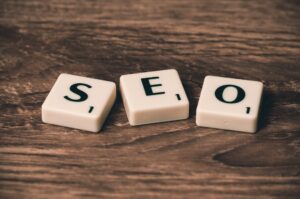
Blog
The Anonymous Buyer Journey – Part 1: The Sales Equation


This is the first in a series of posts about the impact of the anonymous buyer journey on sales and marketing effectiveness as the last three years have shown significant changes. We begin at the core of the issue, reviewing an effective sales equation for this new environment.
When the sales equation is aligned companies experience customer growth, increasing revenues and product market fit. However what about when the sales equation is not producing desired results? Knee- jerk reactions can be price discounts, increased lead generation and less qualification of new prospects causing more frustration and missed sales quotas. Knowing the elements of the sales equation is key for sales and marketing teams to experience success working together.
Known Problem – is important for budgeting and prioritization with IT customers. Not every IT project gets funding. Those projects above the “cut line” get funding, while those below do not. Also having a defined market from analysts with a perspective on market maturity and solution readiness for enterprise customers is key. The ultimate is a “must have” solution highly desired by customers, normally defined by the positives of opportunity and growth or the negatives of pain, expense and regulations.
Known problems have a life cycle and timing is critical after early adoption into the growth phase for a sales equation as what works with early adopters will often fail with growth customers. One educational meeting getting you into lab testing with early adopters will often turn into a process of validation steps. Here a solid sales equation is a must for the growth phase and production use of your solution or service.
Proof of Results – are key validation points for new customers to understand what they can expect from your solution. Even better are project results within their industry category for like-sized companies. A shift from traditional “canned” vendor case studies to information sharing at industry peer events, customer project result presentations and customer awards has added more validity to solution claims.
While few customers talk to the press today, they do communicate with each other as peers. The business-to-customer (B2C) experience of online reviews and candid feedback is making its way into the business-to-business environment (B2B). Do you have compelling proof of results for your solution or service? Even more important can an anonymous buyer view these results without running into a lead generation form? Lack of testimonials, customer awards and project results are common in a broken sales equation. Customer advocacy is the new case study.
Pricing – should meet expectations and budgets as noted above for funding a known problem. Discounting more than 50% in North American and European markets is normally a warning sign, however 80% price discounts are normal in the Asia-Pacific region. While early adopters often have lab budgets they control, the growth phase adds procurement, pricing expectations and budget planning. You also need to recognize the signature authority of your buyer; going several levels above it can lead to issues. Overall, discounting well beyond regional norms is a red flag for an effective sales equation. Annual subscription pricing can be an advantage over one-time perpetual pricing models for these reasons, however procurement is likely to apply a 3X or 3.5X multiplier to compare with perpetual pricing expectations.
Advantages – should be clearly desired by prospects and noted by analysts as market leading over competitors. This is also known as the New York City “one-minute meeting” – why are you better and what are your results? Pass this test and you get a meeting. Fail to be audible-ready with a concise answer and prospects will likely not have time to meet with you. Explaining how your technology works with fast-fly over product demonstrations might be entertaining, but you should really focus on desired advantages with the limited time provided. Know your solution and know your customer’s business; be concise and clear in your communications.
Advantages are also the part of the sales equation normally loaded with buzzwords (i.e. big data, machine learning, AI) where sales and marketing teams sound the same, prospects are confused by too much noise, or the advantage is not desired. Great product marketers always know to end feature claims with advantages and customer outcomes to add validity. For example, our solution provides A, B and C providing an M% reduction in effort with an N% increase in results. Then back up your claim with one or more customer project results, peer presentations or a customer award.
Results - a successful sales equation results in product market fit, customer growth and increasing revenues. Unfortunately this short sentence is much harder to enact than write into an online post. Review the four areas to your sales equation: known problem, proof of results, pricing and advantages. Are you aligned with solid content, context and evidence in these four areas? Review your website, can an anonymous buyer quickly understand what known problem(s) you solve, the expected results of your solution or service through customer advocacy, and learn clearly defined advantages over competitors?
The next blog in this series will look at the shift between marketing and sales for solution expertise.
[share title="Share this Post" facebook="true" twitter="true" google_plus="true" linkedin="true" pinterest="true" reddit="true" email="true"]

